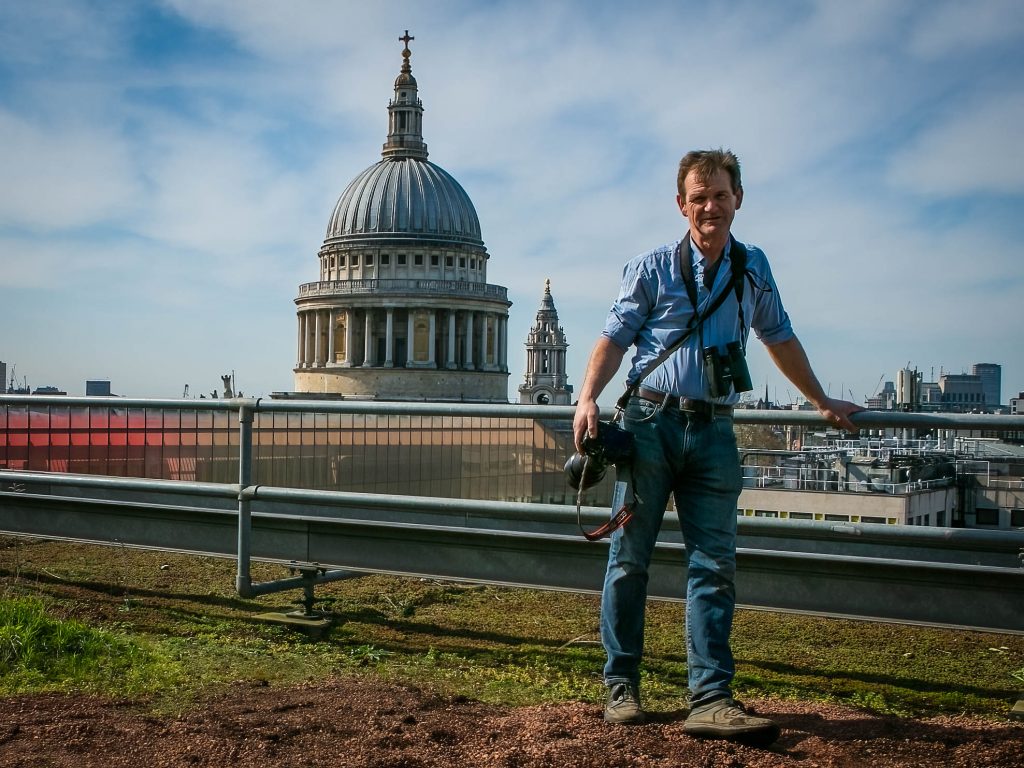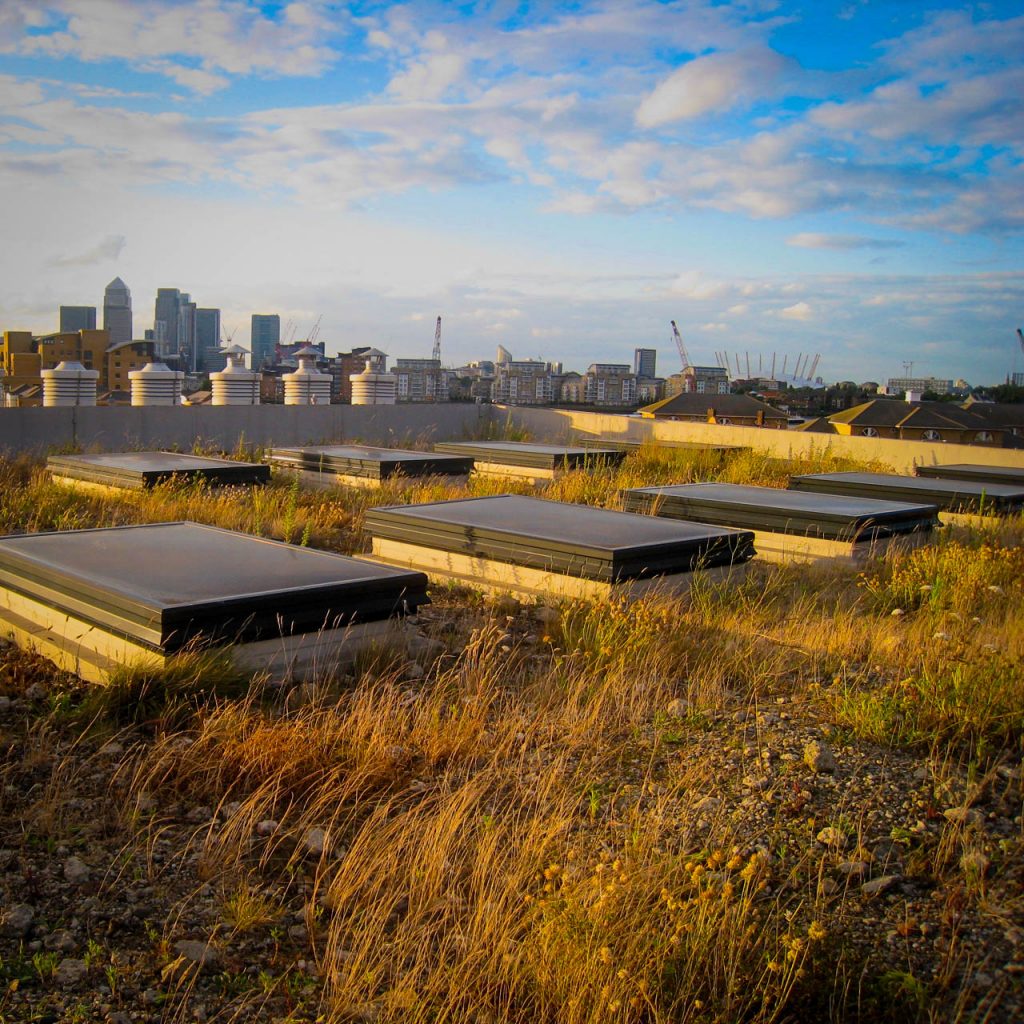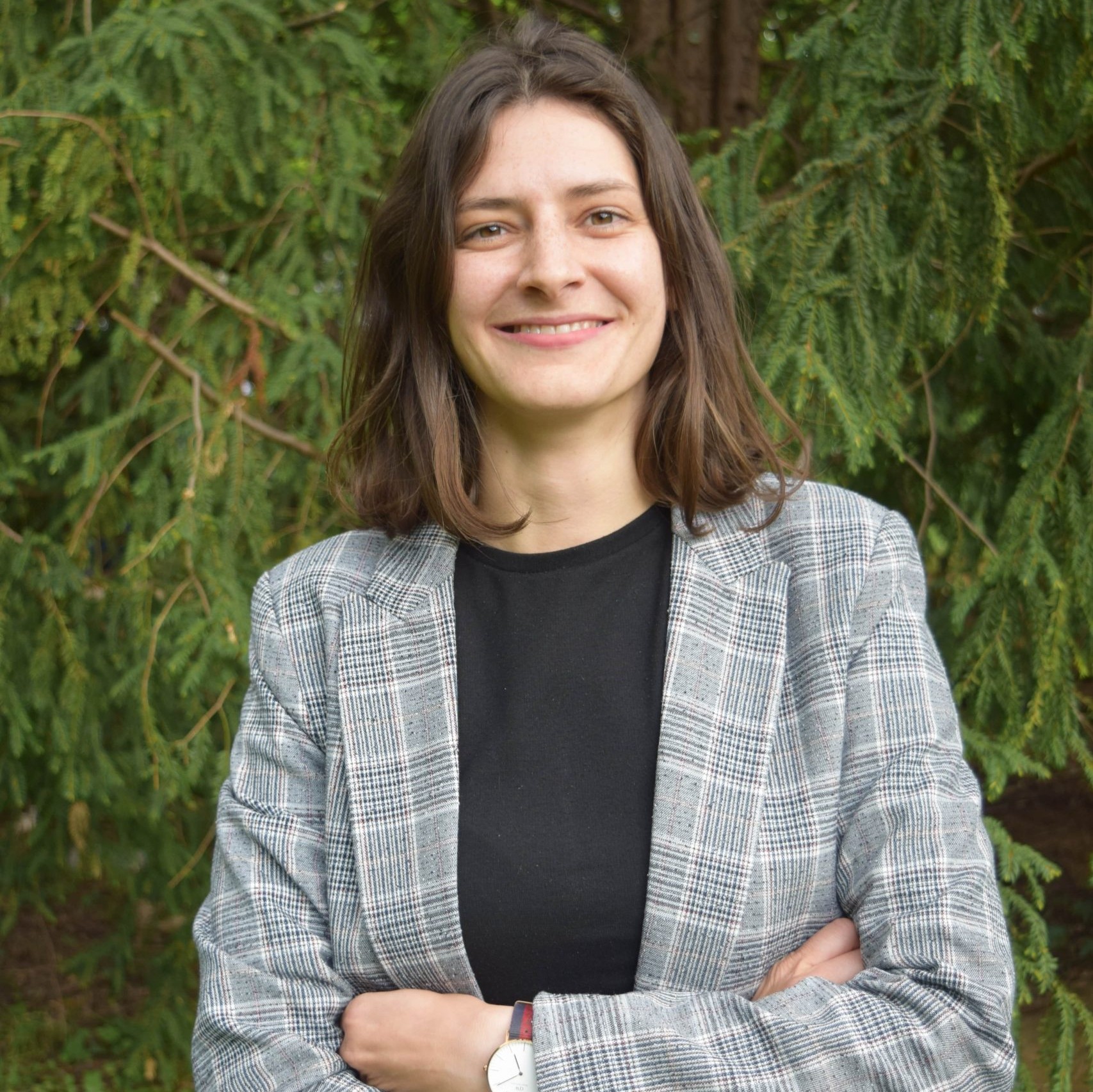A circus performer, an actor, and a birdwatcher – becoming the name in the field of green roofs certainly wasn’t on Dusty’s agenda. The current President of the European Federation of Green Roof and Wall Associations reflected with us on the path that led him to become one of the leading experts on green roofs.
It All Started with a Bird
As a nature lover, Dusty has been observing a certain rare type of bird called the black redstart. This type of bird nests on brownfields, and what struck Dusty was that nobody has managed to protect it. So, what did he do? In 1997, he decided from then on, the newly built buildings would have some type of vegetation on the roofs – hence the green roof idea.

The Year Was 2000…
… and Dusty had just read an interesting article about a certain guy in Switzerland doing amazing stuff. The guy was Dr. Stephan Brenneisen, green roof and biodiversity expert and head of the Green Roof Competence Centre at Zurich University of Applied Sciences (ZHAW), researching and establishing green roofs in Switzerland. Although impressed, the internet at the time wasn’t very helpful. But this was no obstacle for a young enthusiast – Dusty flew to Switzerland to meet Dr. Brenneisen and brought all his research back with him to London, unknowingly creating a name for himself in the field of city planning.
Having no university background in Building Science or City Planning, Dusty is a self-thought professional. In fact, in 2006, he campaigned with his colleagues for a policy in London. They wrote a technical report to advise the mayor to implement a green roof policy, and it was Dusty that then wrote the policy itself; and as he says, he learned a lot about city planning through the process. Eventually, the New Green Roof policy was added to the London Plan, and what it does is, it makes the developers of buildings explain their decision for not including a green roof in their designs. The impact: in 2010, London had about 200,000 m2 of green roofs; today (in 2021), about 2,000,000 m2.
Becoming the President of the European Federation
At one point, Dusty may have been just another guy on the street, not really knowing much about green roofs, but today he is the President of the European Federation of Green Roof and Living Wall Associations (or EFB for short).
What the Federation does is influence the European Union through various activities: either helping to write policies, researching green roofs, bringing awareness to countries and governments of this thriving industry, or influencing other countries that might be at the very start of the green roofs’ path. The main thrust of the Federation’s work is essentially to engage, communicate and inspire others for green roof implementation.
They create green roofs that meet the challenge of carbon-neutral cities, but their aim is to go one step further: could green roofs be carbon-negative as well? “That’s a big focus of my professional work at the moment, how we might achieve that,” says Dusty.
Travelling all around the world, researching green roofs, advising people, meeting experts, becoming the face of green roofs “completely changed my life,” remarks Dusty. “And it’s kind of nice to think you’ve made a big difference.”

Teamwork Makes the Dream Work
Of course, not all work was done by Dusty himself. As in many cases, there is a whole team behind driving positive changes – and here, it was no exception. As Dusty points out, the Environment Agency in England and the government’s nature conservation body Natural England were very supportive, and a lot of other people were involved, without whom the green roofs’ success story wouldn’t have been such a success after all.
As Dusty phrased it perfectly himself: “It wasn’t all Dusty, it was a lot of other people involved. And it’s not only my Federation, it’s a lot of people involved. And the whole team, everyone’s working so hard. It’s always about getting a lot of people in the right place at the right time, who have the knowledge and the wherewithal to do things.”
A Story of Success
When asked about the biggest success in the field of green roofs, Dusty immediately credits creating the habitat for the bird that inspired it all. Now, the black redstarts are present on the green roofs, feeding and creating their lives there. “That’s why we put the green roofs there,” says Dusty proudly. “When you go from no green roofs to 2 million square metres, you kind of go, “I think I’ve done something good in my life.” Sometimes people forget that actually, they’ve made a difference.”
In 2018, the roof of IKEA in Greenwich changed forever, as it was the first building whose roof was designed with the help of his planning; and the vegetation was seeded there by Dusty himself, with the seeds that he collected locally.

Not getting lost in the process, Dusty acknowledges innovation is never a quick task – changes need to be made gradually. The whole idea might have started in 2000, but it wasn’t until 2019 that the last two London boroughs (the London Borough of Redbridge and the London Borough of Bromley) set local planning requirements for green roofs. Dusty is well aware that making positive changes is a process – if you pressure people into doing something fast and immediately, they will develop a dislike for your plan and/or make unintentional mistakes. You also need to understand cities differentiate between each other, and therefore have different needs: “You have to do it at a local level, not on a national one. It’s not going to be a lot of difference, but it gives the locality the ability to define what it wants,” advises Dusty.
A great example of that mindset is Bogotá, Colombia. They recognise that they are a developing country, and instead of following the predetermined guidelines, they’ve asked themselves, ‘What does the city want? And how is the city going to get that?’ – they’ve created guidelines that fitted their city. As Dusty further explains, “planning starts in the city. And it starts from climate change, the biodiversity crisis, and then gets down to the detail, the technical detail.”
You Learn from Mistakes
One could argue Dusty went completely blind into the field, and it might be true, as he had no prior knowledge of green roofs. In fact, because the bird likes to live on brownfields, their initial ‘success’ was convincing people to implement brown roofs. The original one was created in 2003 on the surface of the Trinity Laban Conservatoire of Music and Dance.

Trinity Laban’s roof in 2008 
Trinity Laban’s roof in 2011 
Trinity Laban’s roof – plants seeded by Dusty, with seeds he collected locally. Image credits: Dusty Gedge
Within three years, Dusty went to Switzerland and realised it was completely wrong: the plants don’t grow on brown roofs, the concrete doesn’t store a lot of water, and it basically provides a really stressed environment. But if it weren’t for these mistakes, London today probably wouldn’t have had such a triumphant case of green roofs: “One of the successes in the London policy was through making that mistake; we were able to write a Supplementary Planning Guidance, which says that green roofs must be 50 to 150 mm in depth, must be seeded with native wildflowers, and must contain all these ecological features,” describes Dusty.
Keep Changing, Keep Growing
He may have achieved a lot already, but he’s definitely not reached the finish line yet; in fact, there are various project Dusty is still involved in.
I haven’t put my feet up yet. I’m always thinking of what we can do next, and how we can do better.
Dusty has been involved with mapping each and every single one of the green roofs in London. Why? For an easier understanding of green roofs in general and providing information on where green roofs could be retrofitted. The project started in 2014, the list was complete in 2016 and is being updated yearly, every August.
Since Dusty’s motto is to keep progressing, his next vision and current ongoing project, the ‘European Satellite Project’, is to develop software and intelligent ways of looking at green roofs. Finding out how to map all the green roofs, how to differentiate between the different types of green roofs, and which roofs could be retrofitted into green roofs – all with the help of a satellite.
Dusty is also the co-founder and driving force behind livingroofs.org, the UK’s leading independent green roof website. There you can find all the necessary green roof information, acquire advice, consult an expert, and so much more.
No time for resting, as Dusty is very actively involved in the World Green Roof Day (WGRD): “a celebration of green roofs all over the world and the many benefits they bring to people and nature.” As one of the founders of the event, Dusty’s team and Federation recognise the value of spreading information about green roofs all around the world – in fact, so much so that they made an official day out of it: 6th of June. Last year (and the first), the event had around 57 participating countries, this year (in 2021) double the number. The event holds a lot of potential, as a lot of cities, companies and individuals get involved. If you’d like to be a part of WGRD 2022, you can get in touch here.
Advice for CityChangers
When it comes to advice for future CityChangers, Dusty recommends: ask yourselves, what do you want to achieve? Why do you want to do it? Is there a technically good way to do that? How do you make the companies deliver for you instead of the other way around?
Because what has been happening a lot lately is people tend to forget that a green roof is about plants. The need for aesthetic seems bigger than the need for functionality. Green roofs need plants that don’t just justify the visual image but ones that are appropriate for the city. Then the roof will be climate-resilient, and therefore help the city adapt to climate change.
Deliver for biodiversity, and you will deliver for the climate crisis. If you start with biodiversity, you get a better green roof.
Let Inspiration Grow
Dusty is certainly an inspiration for everyone; he is living proof that ingenuity, meaning and passion in life can strike at any time. It might not be how we envisioned the future for us, but isn’t that its very charm – the numerous potentials life throws at us? It just happened to be that Dusty’s epiphany came in a shape of a small, innocent bird, unknowingly changing the way we see co-living with the ecosystems around us.


